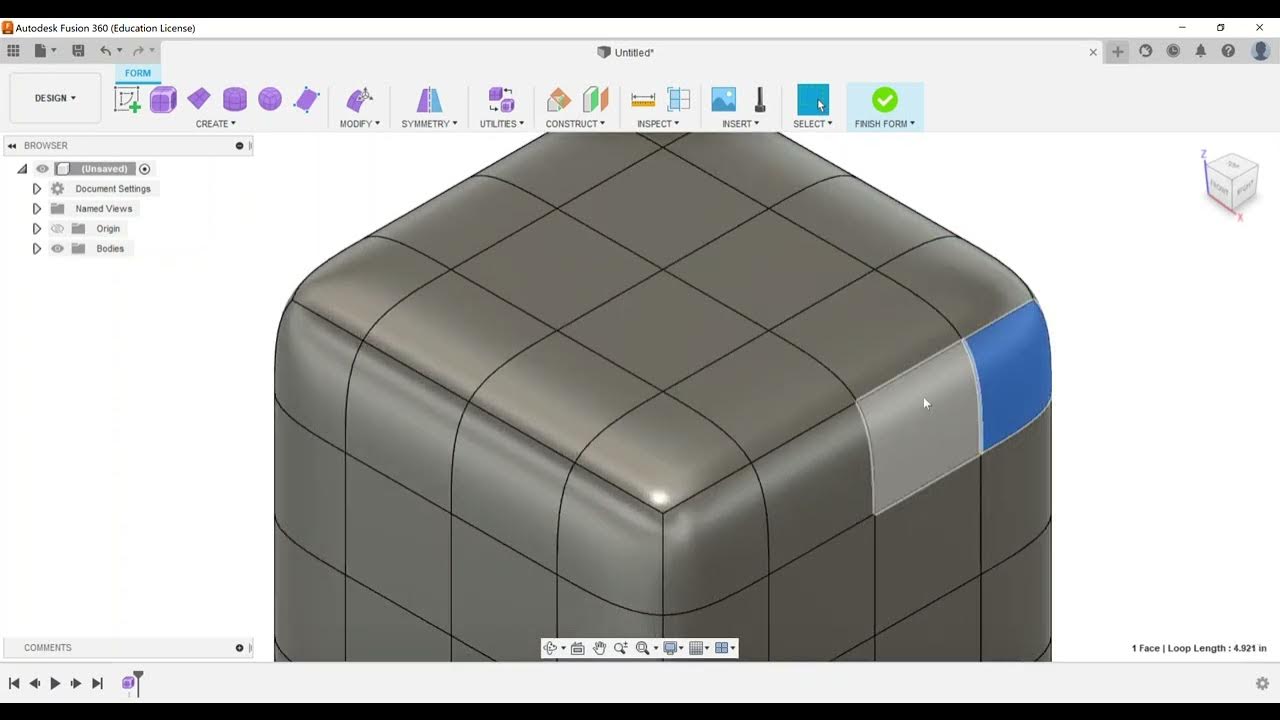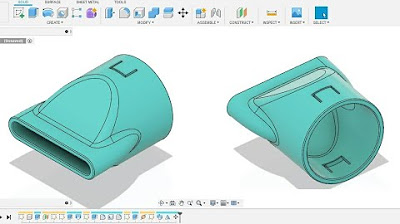Fusion 360 Form Mastery - Part 1 - How to Create a Form Body #Fusion360 #Tsplines #Forms
Summary
TLDRIn this instructional video, Matt from 'Learn Everything About Design' introduces a series on mastering the Forms workspace in Fusion 360. He discusses the basics of form creation, comparing different methods such as extrude, sweep, and revolve with form bodies, and highlights the nuances of using splines and control point splines. Matt also explores the pipe tool for creating complex organic structures and emphasizes the importance of managing form edges and vertices to avoid self-intersections. The video aims to build a solid foundation for designing form bodies from scratch, without relying on predefined shapes.
Takeaways
- 📘 The video is a tutorial focused on mastering the forms workspace in design software, specifically for creating form bodies.
- 🔍 The presenter, Matt, emphasizes the importance of understanding the basics of form tools to build a solid foundation for more complex modeling tasks.
- 📁 Viewers are instructed to download a form creation data set from the video description to follow along with the tutorial.
- 📐 The video covers the use of boolean operations in form bodies, including the differences between using form tools for extrudes, revolves, and sweeps compared to creating surfaces or solid bodies.
- 🌐 The 'pipe' tool is highlighted as a useful feature for creating complex organic tube structures or custom lattices, with a demonstration of its capabilities and limitations.
- 📉 The tutorial points out that using extrude for form bodies can be problematic due to the difficulty in controlling the shape with a high number of divisions.
- 🔄 The 'sweep' function within form tools is praised for allowing for some overlap and manipulation of curves without causing self-intersecting issues, unlike surfaces or solids.
- 🔄 'Revolve' is discussed as a method that requires careful attention to the number of faces to match the desired shape, with the added complexity of circular symmetry.
- 🛠️ The 'loft' method is shown to be challenging with smooth starting sketches, suggesting that surfaces or solids might be more appropriate for such designs.
- 🧱 The presenter suggests that starting with primitives like a box or a cube provides a good base for creating more complex forms and is his preferred method.
- 🔮 The difference between quad balls and spheres is highlighted, noting that quad balls are generally preferable to avoid bad geometry when manipulating the form.
Q & A
What is the main focus of the video series by Matt with Learn Everything About Design?
-The main focus of the video series is to master the forms workspace, providing a foundation for building 3D models and exploring various methods to create form bodies.
What is the first step suggested in the video to start creating form bodies?
-The first step is to download the form creation data set, which includes a construction plane and several sketches.
What is the difference between using a fit point spline and a control point spline when creating an extrude in form bodies?
-A fit point spline looks at points on the surface or curve, potentially creating more faces and a closer match to the form body, whereas a control point spline requires more manual manipulation to match the shape and may result in fewer faces.
Why might using an extrude for form bodies be problematic when starting with a spline sketch?
-Using an extrude for form bodies with a spline sketch can lead to a high number of divisions, making it difficult to control the shape and potentially resulting in an overly complex model with too many edges or vertices.
How does the sweep function in form bodies differ from using it with solid or surface bodies?
-In form bodies, the sweep function allows for overlapping form edges and vertices without causing self-intersections, which is not allowed in solid or surface bodies.
What is the significance of the number of faces or divisions in a revolve form body?
-The number of faces or divisions affects the accuracy and control over the shape of the revolve form body. More divisions can lead to a closer match to the desired shape but also increase the complexity of the model.
What is the main advantage of using the loft method in form bodies?
-The loft method allows for the creation of form bodies between disconnected profiles, offering flexibility in shaping and the ability to adjust the spacing between profiles based on curvature or uniformly.
How can the pipe tool in form bodies be useful for creating complex structures?
-The pipe tool is useful for creating organic-looking tube structures or custom lattices by connecting paths in a sketch, allowing for the manipulation of the pipe's global diameter and segment count.
What are some challenges when using the pipe tool for creating complex intersections?
-Challenges include the creation of pinch points and the difficulty in managing a high number of curve intersections, which may require manual adjustments and corrections.
What is the difference between a quad ball and a sphere in terms of their division and manipulation?
-A quad ball is divided in a way that avoids problematic intersections, making it more suitable for manipulation. A sphere, on the other hand, can have issues when manipulated due to the presence of triangle patches and non-welded vertices.
Why might a designer choose to start with a cube or a single face when modeling complex objects?
-Starting with a cube or a single face provides more control over the modeling process, allowing the designer to build up the shape incrementally and avoid complications associated with more complex primitives.
What is the difference between solid bodies and surface bodies in the context of form tools?
-Solid bodies are created when the form is completely enclosed, while surface bodies are created when the form is open. Open forms are converted back to surfaces in the design workspace, and closed forms are turned into solid bodies.
Outlines

This section is available to paid users only. Please upgrade to access this part.
Upgrade NowMindmap

This section is available to paid users only. Please upgrade to access this part.
Upgrade NowKeywords

This section is available to paid users only. Please upgrade to access this part.
Upgrade NowHighlights

This section is available to paid users only. Please upgrade to access this part.
Upgrade NowTranscripts

This section is available to paid users only. Please upgrade to access this part.
Upgrade NowBrowse More Related Video

Day 2 of Learn Fusion 360 in 30 Days for Complete Beginners! - 2023 EDITION

Fusion 360 beginner's Exercise #9 - Fusion 360 tutorial

Sculpt - Create a Form

Part Modeling - Create a Pattern of Features

Fusion 360 beginner's Exercise #10 - Fusion 360 tutorial

Fusion 360 beginner's Exercise #7 - Fusion 360 tutorial
5.0 / 5 (0 votes)